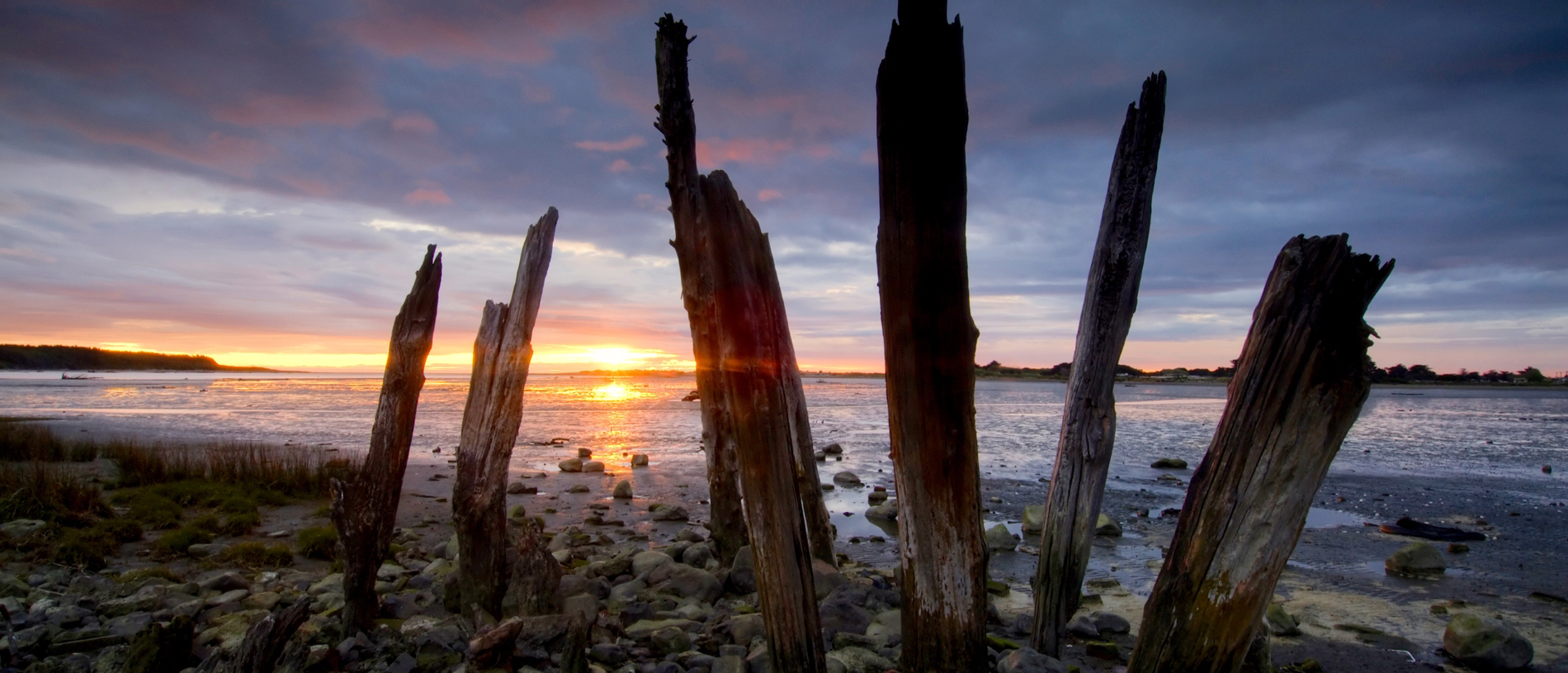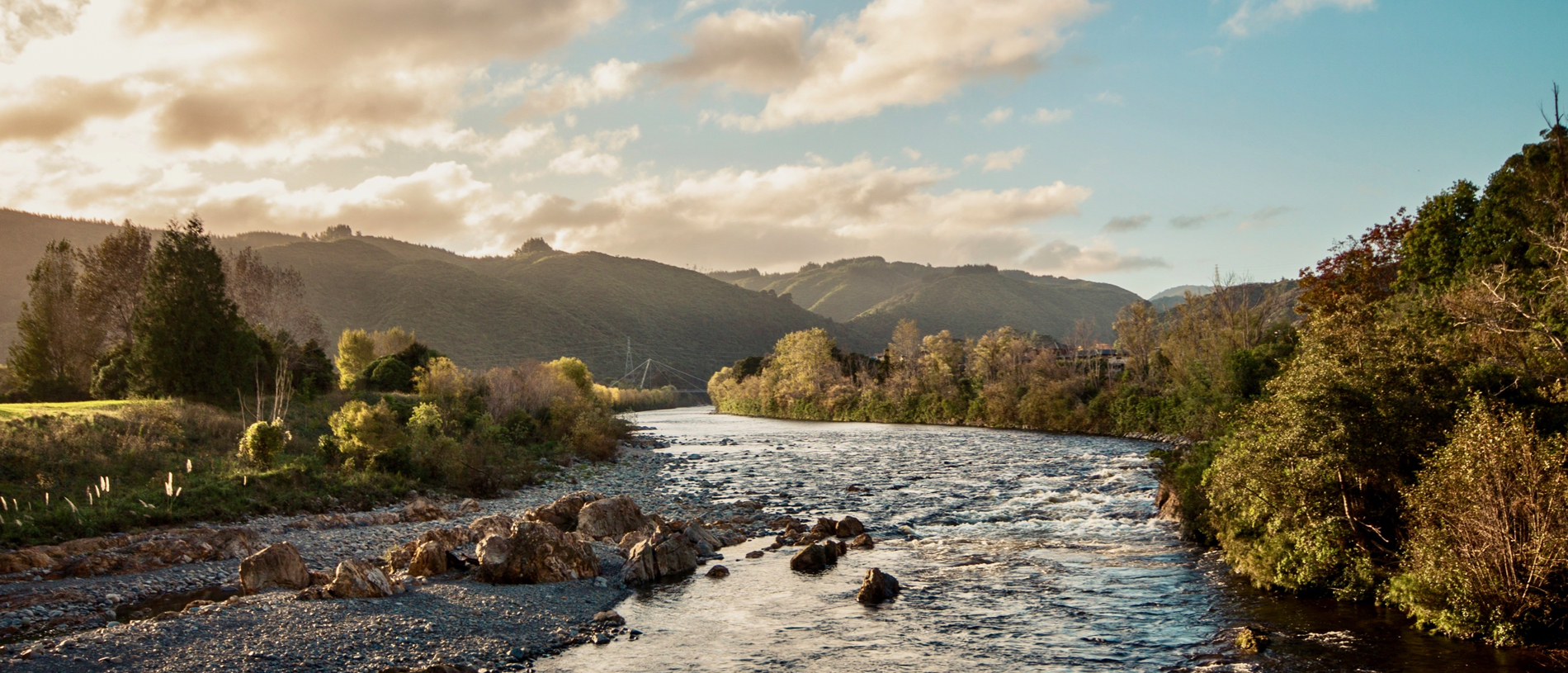
Horowhenua: where the earth moves
Māori called Horowhenua ‘shaking earth.’ Historically it was a wetland – the floodplains of the Manawatū River – carpeted in flax with the odd stand of podocarp forest for variety.

The flats toward the headwaters of the Hutt River (named after the Chairman of the New Zealand Company, Sir William Hutt) must have been a magical place in pre-European times – dense, bird-infested forest alongside the swiftly-flowing waters of the river in its stony bed.
Māori knew the river as Heretaunga, a name carried from Hawke’s Bay where it was originally affixed to a wharenui at Whatonga: it means, loosely, ‘tying-up place’ or ‘mooring.’ The area itself was known as Ōrongomai, which means ‘Rongomai’s place’ (Rongomai being a kind of deity in several different sets of Māori mythology.)
The first European settler in the district is supposed to have been Richard Barton, who carved out a farm here in 1841. His homestead was at a place he named Trentham, after an estate he managed in England; he even went so far as to try to base his new Trentham on the old, reserving some of the podocarp forest even as he cleared the rest. Barton’s Bush, in Trentham Memorial Park, still stands today, thanks to his foresight.
The other claimant to earliest European resident is James Brown, who brought his worldly possessions from the Taita Gorge using a dray that he dismantled, carried piece by piece across the river and then reassembled on the Upper Hutt side. He was indisputably the first inn-keeper, opening the Criterion Hotel on the corner of Russell Street and Main Road in the early 1850s.
Farming was the main activity in the Upper Hutt and Akatārawa Valleys at first. It wasn’t until the completion of the Remutaka Incline in 1878 brought the railway through that the population began to grow. Kaitoke, the site of the last station before the Incline, was a busy refreshment stop until the completion of the Remutaka Tunnel in 1955.
By the late 1800s, it was customary to refer to people as living either in the Lower Hutt area or the Upper Hutt area and the usages were eventually given official sanction.
Once the railway was electrified and faster transit to Wellington was available, suburbia began to establish itself. Most of those settling here were drawn to the relative seclusion: the older suburbs of Silverstream, Birchville, Tōtara Park and the picturesquely named Brown Owl have much in common with newer subdivisions such as Kingsley Heights, Riverstone Terraces and Emerald Hill in this respect. And while much of the farming activity has been driven out of the district by development, the northern reaches – Te Marua – and the secluded Whiteman’s Valley (named after George Whiteman, the pig-hunter who stumbled across it in 1846) still draw lifestylers and hobby farmers. The character of most of the hinterland of the Upper Hutt CBD is pleasantly bucolic, framed as it is by the Akatārawa and Kaitoke Forests to the west and the Pukaratahi Forest to the east.
The main feature of the district, of course, is the river (and its tributaries). Not only does it look good, but up here the quality of the water is excellent, too. Much of Wellington’s freshwater comes from the reservoir above Kaitoke.
If you’re into the outdoors, Upper Hutt has much to offer you. The hunting (deer, pigs, goats) in the Akatārawa, the Remutaka and the Pukaratahi Forest Parks is excellent (the New Zealand Deerstalkers’ Association has a sighting-in range at the entrance to the Remutaka Incline) and there are some excellent tramps and mountain-biking adventures to be had, too.
The nationally famous Karapoti Classic is a 50km race, reckoned to be the oldest mountain bike event in the Southern Hemisphere, with the first having been held in 1986. North of Te Marua is the Upper Hutt entrance to the Remutaka Incline, formerly the main rail route to the Wairarapa, but these days an exhilarating cycle trail, complete with tunnels. The Incline is technologically significant, as trains approaching from the Wairarapa side required a Fell engine – equipped with an apparatus that gripped a special third rail to assist with climbing and braking – to handle the gradient.
Of course, if you’re after something flatter to ride or walk, the track along the Hutt river bank runs all the way from Trentham to the Petone foreshore, and the sedate walks in Trentham Memorial Park will suit those of more modest mobility or ambition.
Staglands in the Akatārawa Valley, a wildlife preserve-cum-petting zoo established in 1972, is a regional favourite with the parents of small children. Besides a wide array of critters, it has a set of displays on the pioneering history of the district and a lovely picnic area beside the river.
If picnics beside the river are your thing, then Kaitoke Regional Park is about as good as it gets, with glorious swimming holes and beautiful bush walks.
The river offers recreational opportunities, too. It is well-stocked with brown trout, and the 15km Kaitoke Gorge is a favourite piece of water for entry-level rafting, tubing or kayaking.
On the other hand, if all that serenity is not to your taste, then you could always attend a meeting at the Te Marua Speedway. Several classes of car – stocks, mini stocks, saloons and so on – are raced here and all that noise, smoke, mud and/or dust will satisfy even the most ardent of Upper Hutt bogans (yes, bogans have been sighted in Upper Hutt.)
Upper Hutt has excellent recreational facilities, including the sports complex at Maidstone, and the regionally famous H20 Extream aquatic facility, too. There are woodchopping competitions held at Trentham, and the rifle range developed as part of the Military Camp is still used for competitive large-bore shooting.
Upper Hutt has not historically been noted for arts or culture, but that’s something they’re trying to change. The Expressions Whirinaki Arts and Entertainment Centre offers gallery space and a theatre and the Silver Stream Railway will give you a taste of rail as it was in days gone by.
Trentham Memorial Park has a bit of history about it, too: it is the site of Richard Barton’s (now vanished) homestead and still features Barton’s Bush. It is also the site of Trentham Military Camp, from which so many young New Zealanders set off on an overseas adventure from which they never returned. And a blockhouse (the Blockhouse, actually) built in colonial times when it was feared the unrest at Kāpiti and down the road at Boulcott’s Farm would spread north, can be viewed by arrangement.
A little way up the Akatārawa Valley Road, you’ll find not one, but two blueberry farms, where you’ll be able to pick your own blueberries in season. And if you’re after an emu encounter, Bluebank Blueberry Farm can sort you out there, too. The pinnacle of Upper Hutt gastronomic achievement is without doubt Kereru Brewery, one of the many excellent craft brewers in the Wellington region, world famous in Upper Hutt since 2011.